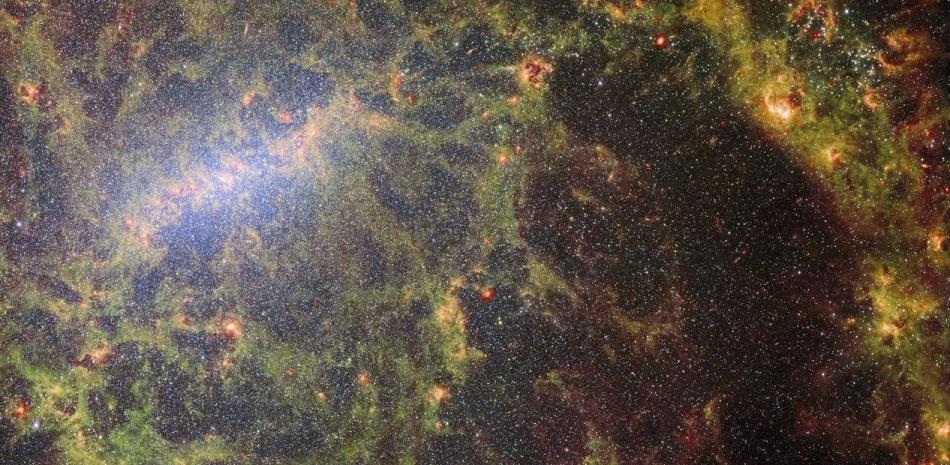At the center of the earth is a metallic sphere whose rotation is independent of the rotation of the planet, which revolves within a great circle.
This mysterious movement at the Earth's core has intrigued the scientific community since its discovery in 1936 by Danish seismologist Inge Lehmann.
Motion and its properties, such as its speed and direction, have been at the center of a scientific debate for decades.
Several recent findings indicate that the fetal circulation has undergone dramatic changes in recent years, although scientists have yet to reach a consensus on what causes these changes or their implications.
Part of the problem when analyzing the core is that it is impossible to directly observe or take samples.
Seismologists have been able to obtain information about the movement in the Earth's core by studying the waves caused by large earthquakes in the Earth's core.
Variations in the behavior of waves of similar intensity passing through the core at different times allowed scientists to measure changes in the position of the metal core and calculate its rotation.
Recent discoveries in the nucleus
Changes in the central circulation have been analyzed since the 1970s and 1980s, but seismic evidence was not published until the 1990s, Dr. Lauren Waszek, a professor of physical sciences at James Cook University, told CNN in Australia.
Given the difficulties in accurately establishing observations of the embryo, subsequent discoveries have failed to establish a consensus on the rate of rotation or its direction.
But the model proposed in 2023 describes a core that once rotated faster than Earth, but now moves more slowly.
The report is published in the journal Science Natural Earth Sciences In January 2023, it says the core slowed further until it began moving in reverse relative to the fluids moving in its shell.
At the time, some experts argued that more data were needed to support those conclusions, and now a team of scientists has released findings that support the 2023 hypothesis.
In an article published in the journal Science nature, The scientists not only confirmed the slowdown of the center, but also reiterated that the slowdown is part of a cycle that occurs every 70 years.
Co-author of the most recent study and dean of earth sciences at the University of Southern California's Dornsife School of Letters, Arts and Sciences, Dr. John Vidal said the new findings confirm the hypothesis.
Vidal added that the conclusion that the epicenter changes in its cycle every 70 years is possible by analyzing specific points where seismic activity was recorded from South Georgia and the South Sandwich Islands in the Atlantic between 1991 and 2023. South America.
Effects on Earth's Magnetic Field
While some experts still say that more evidence is needed to clearly establish the dynamics of the core's movement, other scientists say that the Earth's magnetic field may be related to this rotation.
Earth's solid metallic core is buried about 3,220 miles into the planet. Surrounding the core is an outer layer of liquid metal.
The core is composed primarily of iron and nickel and is estimated to be as hot as the Sun's surface at about 9,800 degrees Fahrenheit.
Earth's magnetic field pulls on this hot metal sphere, causing it to spin. At the same time, gravity and the flow of fluids in the outer layers affect the core.
Videl added that these magnetic dynamics cause variations in the core's rotational speed over decades.
Impacts of metallic fluids on the core's outer layer create currents that activate Earth's magnetic field, which shields the planet from deadly solar radiation.
Although the direct effects of the nucleus on the magnetic field are not yet known, scientists reported in 2023 that the nucleus's slow rotation could influence the field and shorten the length of a day.
However, Vidal said, changes in the central circulation are almost invisible to the population on Earth's surface.
As the core moves faster, the top also accelerates. This speeds up the rotation of the earth and shortens the length of the day. But these cycle changes last for milliseconds a day, Vidal said.
Scientists study the Earth's core to understand how the planet's interior forms and how its activity interacts with subsequent layers.
“New and emerging methods will be central to answering existing questions about the Earth's core, including its rotation,” said Wassek, an Australian academic.
Experts say that the Earth's core has stopped and the planet's rotation direction has changed





:quality(85)/cloudfront-us-east-1.images.arcpublishing.com/infobae/KTKFKR763RBZ5BDQZJ36S5QUHM.jpg)